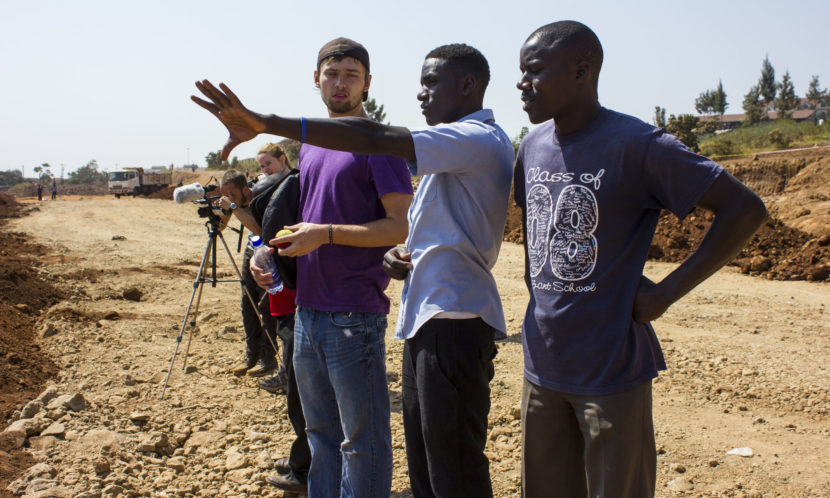Where Do We Begin?
Getting Started With A Documentary Idea
Are you thinking about making a documentary but don’t know where to start? This guide will show you what steps you can to take to make meaningful progress on your passion project and how to begin crafting it into an story that can make an impact.
START WITH RESEARCH
Before you dive into filming, it’s crucial to understand your topic deeply. Here’s how to conduct effective research:
- Read widely: Look for articles, case studies, and books about the social issue you’re interested in. If you want to explore homelessness, find publications that address its causes, impacts, and solutions.
- Watch related media content: Check out other documentaries, movies, online videos, and even news segments related to your topic. Notice what you like and dislike about how they present their stories. Also consider what you find compelling and what gaps you might fill.
- Talk to people: Start conversations with experts like social workers and policymakers, as well as those directly affected by the issue, such as individuals who have experienced homelessness. These don’t have to be posed as interviews when you first begin; with the right questions a simple conversation can offer new insight and bring to light personal stories that are often overlooked.
This step helps you see what’s already out there and starts giving you ideas about what new angle you could explore.
DEFINE YOUR DOCUMENTARY'S PURPOSE
After gathering information, clarify what you want your documentary to accomplish.
Consider:
- Who is your audience? Are you targeting policymakers, the general public, or specific communities?
- What change do you want to instigate? Maybe you aim to challenge specific misconceptions about homelessness.
- What action should viewers take? You might want your audience to support local homeless shelters or engage in community advocacy.
Answering these questions will ensure your documentary has a clear goal and resonates with your intended audience.
CHOOSE YOUR STORY
The research phase is foundational in documentary filmmaking, serving not just to gather information but to shape the entire narrative of the project. This phase determines the “who, what, when, where, and why” of your documentary, setting up a blueprint for everything that follows. Once you have your purpose determined, your research should be leading you to make decision about the key story elements.
- Character
- Conflict
- Stakes
- Arc
- Resolution
Identifying Characters: The heart of any story is its characters. Through research, you discover the individuals whose experiences and perspectives will drive your narrative. These might be experts on your topic, directly affected individuals, activists, or even opponents. For example, if you’re exploring homelessness, you might focus on a family navigating through the system, a social worker on the frontline, or a policymaker pushing for change.
Uncovering Conflict: Every compelling story involves conflict. Research helps you identify the central struggles and tensions that your characters face. This could be internal, such as personal battles with mental health, or external, such as fighting against systemic barriers. In documentaries, conflict doesn’t just add drama—it illuminates the complexities of the issue you’re exploring.
Establishing Stakes: During the research phase, you’ll determine what’s at risk in the narrative. What does each character stand to gain or lose? Understanding the stakes makes your story engaging and emphasizes the importance of the issue. For instance, the stakes might be particularly high for a young adult on the brink of homelessness, highlighting the urgent need for societal intervention.
Developing the Arc: Research shows you how your characters have changed over time and what future changes might occur. This narrative arc is critical as it shows the evolution of the story and the development of the individuals involved. For a documentary on an environmental issue, this might involve following activists from their first protests to major political achievements or setbacks.
Envisioning the Resolution: Finally, your research will give you hints about possible endings to your story. While documentaries often follow ongoing stories, understanding potential resolutions can help you structure your narrative to lead towards a powerful conclusion, whether it’s open-ended or definitive.
You can read more how to craft these elements into your ‘Documentary Story Summary’ here.
TRANSITION TO THE NEXT STAGE
Once you’ve gathered enough information to outline these narrative elements—character, conflict, stakes, arc, and resolution—you’re ready to conclude the research phase. This doesn’t mean you’ll stop discovering new information, but you’ll have a solid framework to guide your documentary’s planning and production. At this stage, you start making strategic decisions about filming locations, interview subjects, and the overall structure of your documentary based on the narrative framework established through your research.
You can read more about ‘The Four Stages Of Documentary Storytelling’ here.
Starting a documentary is all about being curious, doing good research, and then telling a story that matters. Use this guide to help you through each stage of the process, from finding out everything you can about your topic to sharing a compelling story that captivates your audience. Let your passion lead the way, and you’ll create something truly impactful.

